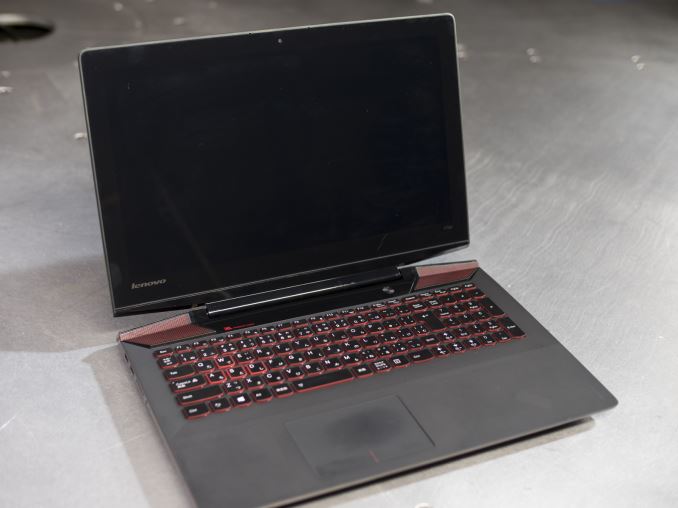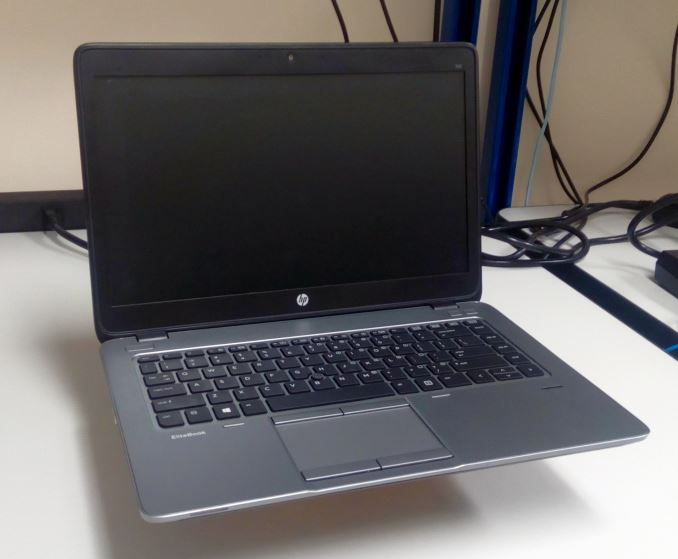Who Controls the User Experience? AMD’s Carrizo Thoroughly Tested
by Ian Cutress on February 4, 2016 8:00 AM EST
In Q2 of 2015, AMD officially launched Carrizo, their new APU aimed at mobile devices such as laptops and portable all-in-ones that normally accommodate 15W-35W processors. Quoted in the media as 'the biggest change to Bulldozer since Bulldozer itself', the marketing arm of AMD released information regarding the Excavator architecture of the new processor, and which contained a long list of fluid and dynamic implementations on improving the Bulldozer based architecture over the previous iteration of Steamroller (Kaveri). Despite this, AMDs target market for the Carrizo platform has not been receptive to AMDs product stack in recent generations due to issues surrounding performance, battery life and designs. AMD believes to have solved the first two of those matters with Carrizo, whereas the third is out of their hands and up to the OEMs to embrace AMDs platform. We wondered if the OEM’s concerns were well placed, and organized some special testing to confirm AMD’s claims about Carrizo.
Who Controls the User Experience: AMD’s Carrizo Tested
Back in early 2015, we performed a long analysis on Intel’s Core M platform, featuring 4.5W processors under the Broadwell microarchitecture. The purpose of that piece was to test several designs using that line of processors, and examining how the design of the chassis and features of the platform directly affected both performance and user experience. For Brett and I at the time, it was an eye opening endeavor, showing just how the slowest processor in a stack in the right notebook chassis can outperform the fastest, most expensive processor in a bad chassis that is wholly un-optimized.
This review is along similar lines, but instead we are testing AMD’s latest Carrizo platform, which is focused on 15W mobile parts in the $400 to $700 market. We approached AMD after the Carrizo Tech Day back in May with a proposal – to speak to engineers and to test the claims made about the platform. Typically sourcing AMD laptops, at least over the past few years, has been a veritable minefield as they are seemingly never promoted by OEM partners as review samples, or as one senior member put it, ‘Some sales people only seem to offer AMD devices if people specifically ask for them’. Our proposal involved sourcing a number of Carrizo laptops when they were launched and tackling them head on, to see how many of the claims made on the Tech Day were testable but also noticeable and true. The issue AMD and OEMs have is that everyone in the AMD-to-OEM-to-retailer chain is invested in selling the platform, so there needs to be a source of third-party testing for people who don’t trust that chain.
Over the course of a few months, our proposal changed and merged with ideas to speak with AMD’s VPs and engineers, with a number of meetings and discussions. It emerged the best way to do this was to fly to AMD’s HQ in Austin, Texas for a week and get hands on time in the labs. We agreed, as speaking to engineers and learning what is going on behind the scenes at AMD is always a good thing, but on the condition that we were free to setup, test and report without any predisposition to the results. There is an added benefit of having engineers only a floor or two away if a problem was to arise. There have been similar events in the past where media have been invited on-site for canned testing, but we made sure this wasn’t going to be the case before we arrived. For example, Qualcomm has invited select media to in-hand, temporary Snapdragon testing on a couple of occasions, with media free to test and report whatever results.
The Testing
We had four Carrizo devices on hand to test for a week, along with a single Kaveri system. These devices were sourced by AMD, and I put in requests for a variety of price points, hardware configurations and styles, along with some specific testing equipment to which we don’t have access. While it wasn’t possible to get everything on hand due to timing issues, the arrangement at least captured a number of areas we planned on testing.
The testing aimed to cover the devices as units, the underlying hardware, as well as the Tech Day claims. Some of this piece will read like a regular review, some of it similar to our Core M testing regarding performance, power and temperature, but a large part is reserved for discussing both the results and the market. When building a platform like Carrizo, a lot of binary decisions are made that can be good or bad for the processor manufacturer, the OEM or the user. We discuss these in detail as a result of our findings.












175 Comments
View All Comments
CajunArson - Friday, February 5, 2016 - link
Yes, and while Zen is going to be much more power efficient, the first models are for servers and desktops. It won't be until well into 2017 until we see a mobile part from AMD based on Zen.Flunk - Friday, February 5, 2016 - link
Claims of future products should always be taken with a grain of salt. It's not real until the product is available and the benchmarks are in.CajunArson - Friday, February 5, 2016 - link
I agree. I'm not saying that Zen will beat whatever Intel is selling in 2017. I'm just saying that it would be hard for mobile Zen parts not to be more power efficient than these last-gasp Carrizo's when mobile Zen finally launches.nandnandnand - Friday, February 5, 2016 - link
2017 for mobile Zen? OmgCajunArson - Friday, February 5, 2016 - link
Well, I can guarantee it won't launch in 2016. I'm also an optimist so 2017 (and not January either) it is (a pessimist would say 2018).Dobson123 - Friday, February 5, 2016 - link
Obviously, a new mobile chip every year around June: Llano in 2011, Trinity in 2012, Richland in 2013, Kaveri in 2014, Carrizo in 2015, Bristol Ridge (same as Carrizo) in 2016, Raven Ridge (Zen, 14nm) in 2017.psychobriggsy - Friday, February 5, 2016 - link
Carrizo with single-channel DDR3 1600 is pointless, especially for games. Did I miss the results when you put the second DIMM in?I've said it before, AMD needs to create its own laptop designs, like it designs its own GPUs, and then sell them via its own OEM channels that it uses for Graphics Cards.
Obviously, it needs to shift its APUs to 14nm first, because 28nm has been pushed as far as possible with Carrizo, but there's a massive gap in power consumption and performance still.
ImSpartacus - Friday, February 5, 2016 - link
Doesn't amd already have Radeon-branded ram and ssds? An entire device doesn't seem unthinkable.Ian Cutress - Friday, February 5, 2016 - link
When we get the desktop Carrizo parts in (Athlon X4 845), we'll be doing a breakdown at 65W with IPC and DRAM analysis.nathanddrews - Friday, February 5, 2016 - link
It will be nice to finally see Carrizo get a proper shake. Limiting it to 15W and single-channel seems like a terrible shame, especially in the category of laptop it is being sold in. Nearly everyone that I interact with never actually counts the hours or minutes of battery life they get. Instead, they just keep their laptops plugged in any time they are near an outlet.Desktop Carrizo excites me mostly just because I want to build a UHD-proof HTPC out of it.